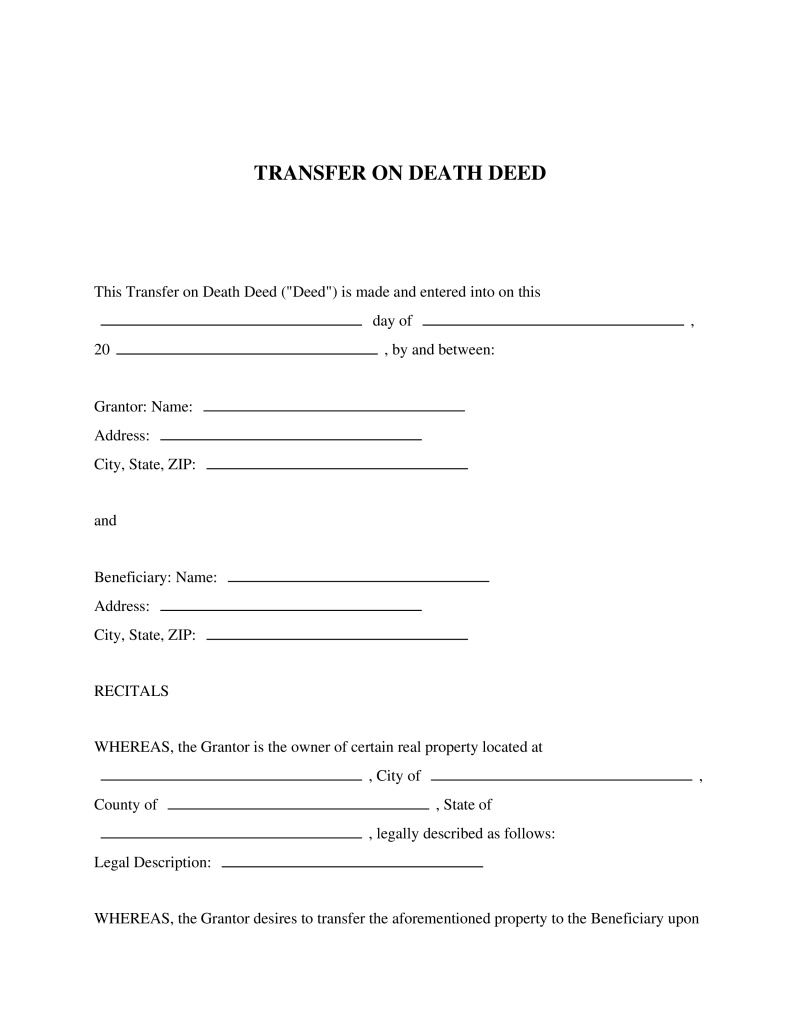A Transfer on Death Deed allows property owners to designate beneficiaries, enabling direct transfer of real estate upon their death.
Owner Full Name
Write the full legal name of the Grantor, which is the person giving away the property or rights. Use their first name, middle name (if any), and last name, exactly as it appears on their official identification. This name is important because it will be used in legal documents to identify the Grantor in any future matters related to this transaction.

Table of Contents
What is a Transfer on Death (Beneficiary) Deed Form?
A Transfer on Death (TOD) Deed, also known as a Beneficiary Deed, is a legal document that allows property owners to designate one or more beneficiaries to automatically inherit their property upon the owner's death, without the need for probate court proceedings. This document is particularly beneficial for individuals seeking a straightforward method to transfer real estate assets to their heirs, ensuring a smoother transition of ownership. It becomes active only after the death of the property owner, allowing them to retain full control over the property during their lifetime. Individuals who wish to bypass the often lengthy and costly probate process will find this document indispensable for estate planning purposes.
Key Features
Important Provisions
- Identification of the Grantor(s) and clear statement of intent to transfer property upon death.
- Legal description of the subject property, ensuring accurate and specific identification.
- Designation of Beneficiary(ies), including contingencies for scenarios such as predeceased beneficiaries.
- Revocation clause specifying conditions under which the deed can be voided or amended by the grantor.
- Acknowledgment and signature section, requiring notarization for legal validity.
Pros and Cons
Pros
- +Provides a straightforward way to pass real estate assets to heirs without probate.
- +Facilitates a quicker transfer of property after death, potentially saving time and money.
- +Offers flexibility, as it can be easily amended or revoked by the property owner during their lifetime.
- +Reduces legal complexities for beneficiaries, providing peace of mind for all parties involved.
- +Enhances privacy by eliminating the public disclosure requirements often associated with probate.
Cons
- -Not recognized in all states, limiting its applicability based on geographic location.
- -May lead to unintended consequences if not coordinated with other estate planning documents.
- -Could potentially create conflicts among beneficiaries if not clearly defined or updated regularly.
Common Uses
- Transferring ownership of a family home to children or other relatives upon death.
- Assigning investment properties to beneficiaries without entangling them in probate.
- Simplifying estate planning for individuals with straightforward asset distribution wishes.
- Providing peace of mind to property owners by ensuring their real estate assets are transferred according to their wishes.
- Avoiding fragmentation of land ownership among multiple heirs through specific beneficiary designations.
- Facilitating charitable giving by designating non-profit organizations as beneficiaries.
Frequently Asked Questions
Do you have a question about a Transfer on Death (Beneficiary) Deed Form?
Example questions:
Not the form you're looking for?
Try our legal document generator to create a custom document
Community Discussion
Share your experience and help others
Legal Notice: Comments are personal opinions and do not constitute legal advice. Always consult a qualified attorney for matters specific to your situation.
Comments (0)
Leave a Comment
No comments yet. Be the first to comment!